How to Make a Tree Swing

Last updated September 7, 2023
A tree swing can be fun for kids and adults. Add one to your yard to offer another way for your family and friends to enjoy the outdoors.
Learning how to build a tree swing is relatively simple. It can be made from rope and a wooden seat. You’ll also need a strong, healthy tree with a branch that can hold the weight of the kids or adults who will use it.
This guide will show you how to make a tree swing.
Difficulty:
Beginner
Duration:
Under 2 hours
Table of Contents
Choose the Right Tree
Choose Materials for the Tree Swing
Measure the Board
Cut the Board
Drill Holes in the Seat
Sand the Seat
Choose the Right Tree
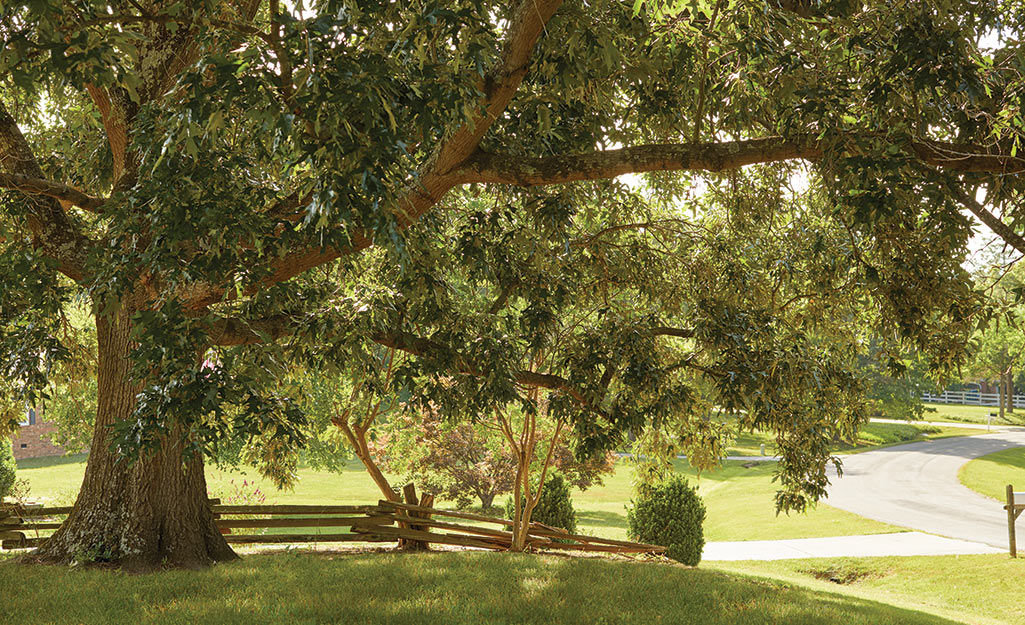
When choosing a tree for your swing, look for a hardwood species with a horizontal limb that’s at least 8 inches in diameter. Avoid fruit trees, evergreen trees and soft wood trees, like pine. Oak trees and hickory trees are generally the best.
If you aren’t sure how to identify the trees in your yard or need help to evaluate a tree’s health, consult with an arborist.
The limb should be large enough that the tree swing can be some distance from the trunk. This distance will vary based on the length of the rope. Four feet from the trunk is a good place to start.
As you look at the trees in your yard, consider the following:
- Does the tree have green leaves during the growing season, especially on the limb you’d like to use?
- Does the tree display any signs of disease, decay or damage? Look for discolored bark, oozing sap, loose bark, holes or cracks.
- Use a hammer to strike the tree trunk and the limb. Does the trunk or the limb sound hollow?
- Look up at the tree’s top branches and limbs. Broken limbs overhead could fall while the swing is being used. They will need to be removed before you build a tree swing.
- Check the area under the branch where the swing will be. It should be clear, with no shrubs, rocks or other obstructions that could be hit while someone was swinging or if they fell or jumped off the swing.
Choose Materials for the Tree Swing
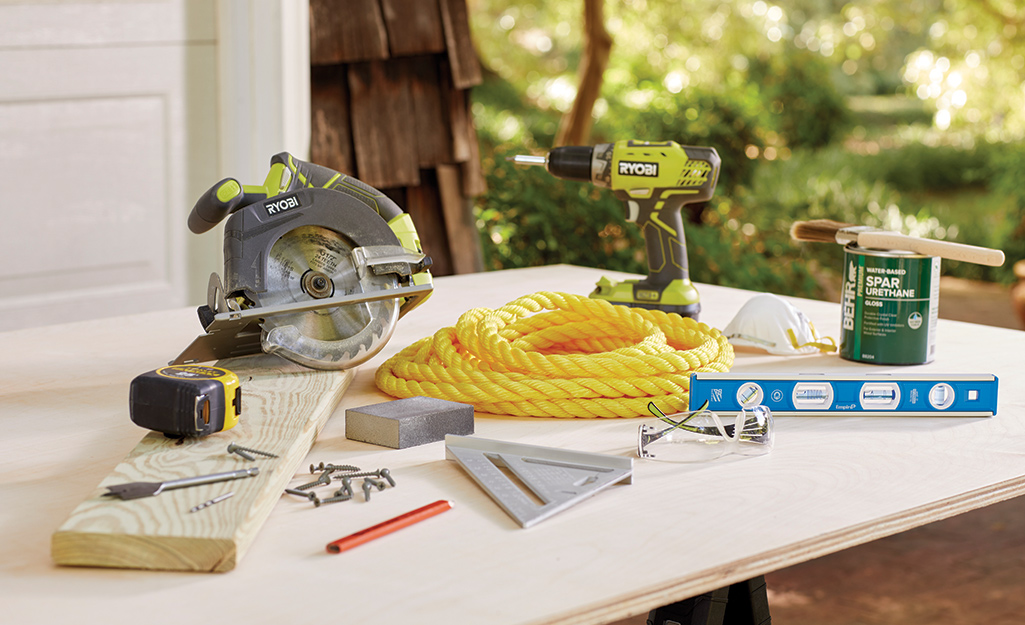
Tree swings can be made with a rectangular wooden seat, a tire, a stick, or a circle of wood or plastic. It can be rustic, fancy or anything in between. In this guide, the tree swing will be made with a rectangular seat with two ropes.
Materials:
- One 36-inch long piece of pressure treated 5/4 pine deck board.
- 28 feet of 3/4-inch twisted polypropylene rope (amount will vary based on branch height and other factors)
- Eight 1-5/8-inch deck screws
- Exterior polyurethane
- 80 to 120 grit sandpaper
Tools:
- Ladder or throw bag with line
- Circular saw
- Drill with 1-inch auger bit, 1/8-inch drill bit for pilot holes, and a screwdriver bit
- Paint brush
Select rope based on working load, not tensile strength. Swinging multiplies the force of the weight by several times. Tying a knot in a rope reduces its strength. A working load rating of 700 pounds is a good starting point for a swing.
The rope you choose needs to be large enough to grip comfortably and securely. The general rule of thumb would be to choose a rope that is 3/4-inch or greater in diameter.
Natural ropes look nice, but they might be too rough on the hands. Also, natural rope will rot faster than a synthetic rope. Twisted polypropylene is a good option, while polyester rope is the best. Avoid using nylon rope when building a tree swing. Nylon rope stretches to absorb shock, so it isn’t optimal for a swing.
The best way to cut polypropylene rope is with a hot knife. You’re unlikely to have this tool at home. If possible, go to the store with the rope measurements you’ll need. Ask an associate to cut and melt both pieces of rope for you. If you must cut the rope at home, tape around each side of the cut first, then carefully melt the ends of the rope with a lighter or soldering iron.
To figure out how much rope you’ll need, measure from the bottom of the limb to the ground. Add the circumference of the limb, (for example, a limb with an 8-inch diameter has a 25-inch circumference.) The swing will be 24 inches above the ground. Don’t subtract that, you’ll need it for knots and loops. For example, an 8-inch limb that’s 10 feet from the ground would require two pieces of rope that are 14 feet long.
Wood for the seat should be able stand up to constant weather exposure. Pressure treated pine works well. Oak is another good choice. In either case, a few coats of exterior polyurethane will help the swing last longer and protect users from splinters.
Wood can easily split along the grain. If you just drill holes into a piece of wood and run rope through them to make a swing, the seat will crack. To prevent splitting, you will attach two smaller pieces of wood to the bottom of the swing to reinforce it.
Measure the Board
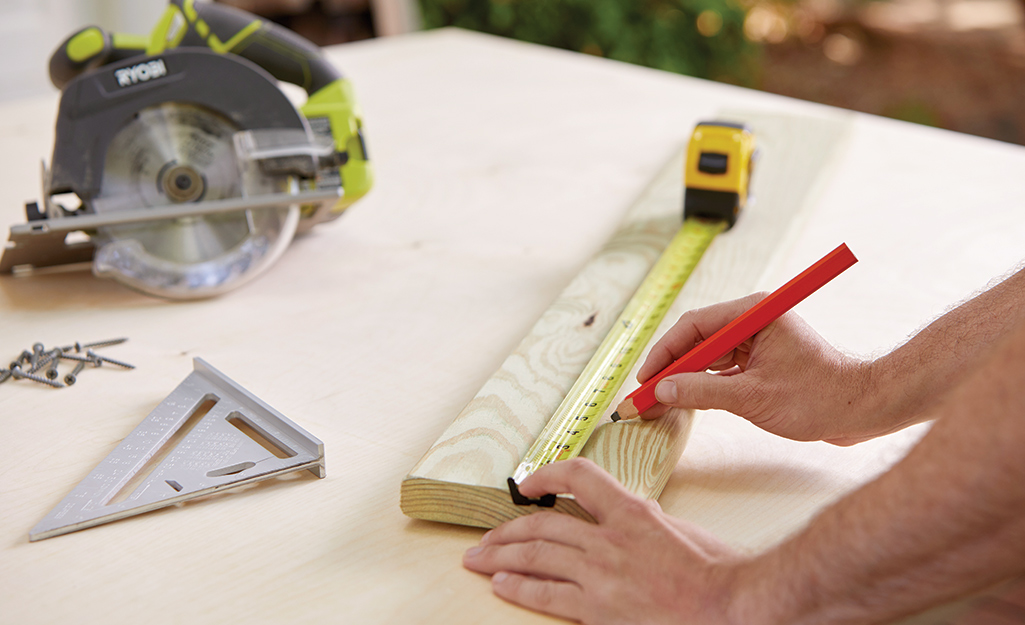
Measure and mark a line at 5 inches and again at 5 1/2 inches from the end of the decking board. Then mark a line at 2 3/4 inches down the center of that piece.
Cut the Board
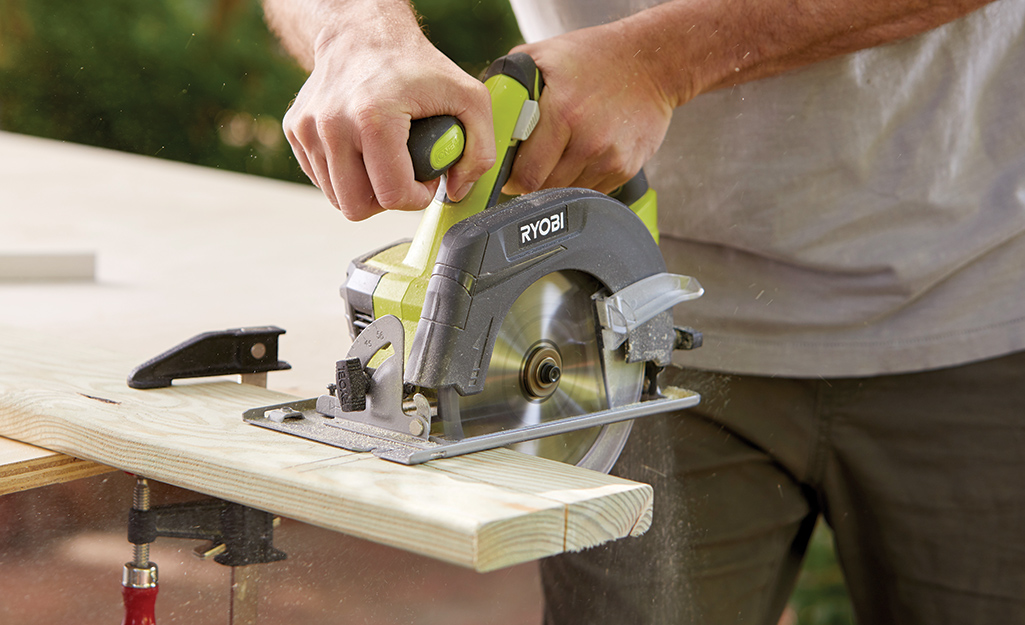
- Cut along the dividing line, stopping at the 5 1/2-inch line. Then cut across the 5 inch line to create two small pieces. Next, cut across the 5 1/2-inch line to make a clean end on the board.
- Mark a line at 26 inches and then cut.
Drill Holes in the Seat
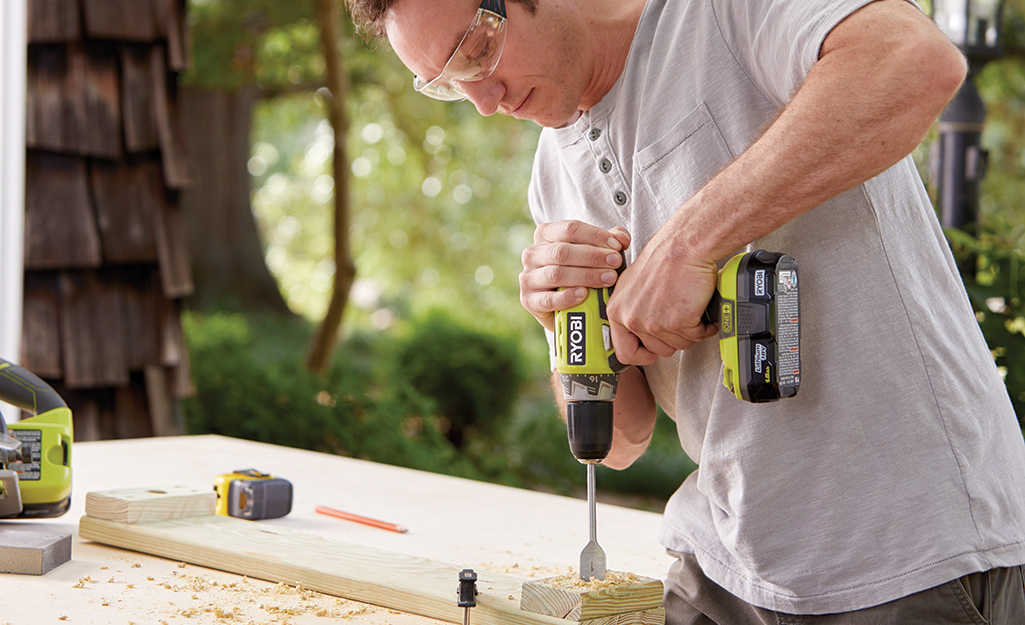
Place one of the short pieces at each end of the seat, with the wood grain running perpendicular to the wood grain in the seat. The seat should be sitting on top of the short pieces.
- Drill pilot holes through the seat, about 1 inch diagonally in from each corner of the short piece.
- Then drive a screw through each pilot hole, securing them together.
- At each end of the seat, mark a short line close to the middle at 2 inches. Then, cross that line with another short line that is 2 3/4 inches from one edge.
- Drill a hole through the seat with the 1-inch auger bit where these lines cross.
Sand the Seat
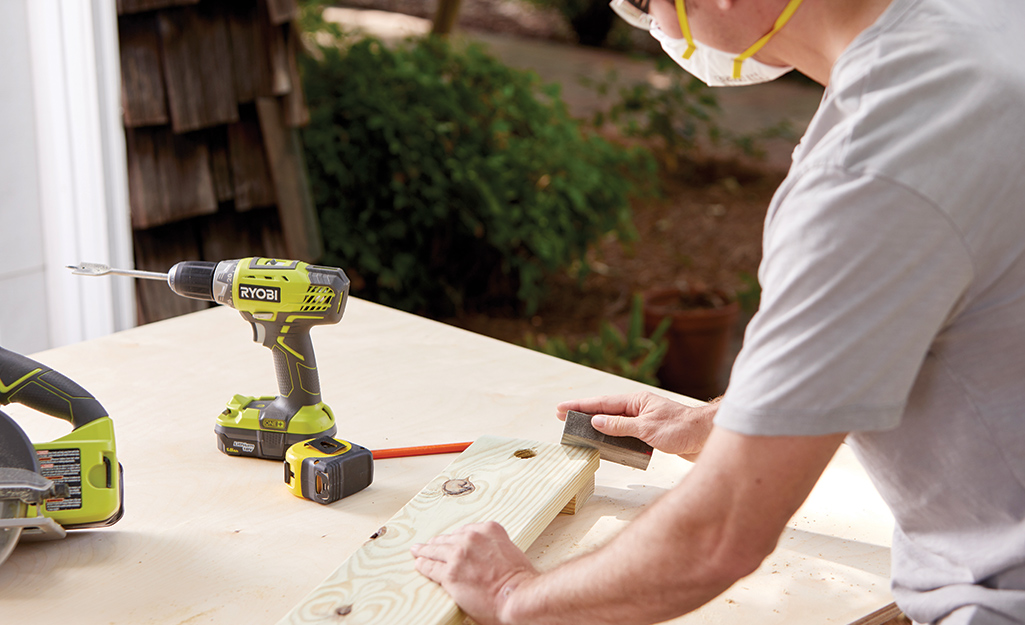
- Sand all surfaces and corners of the tree swing with sandpaper, a sanding block or a sander. Work until the surface is smooth.
- Wipe off the debris with a tack cloth.
- Smooth the rough edges of the ends of the swing and inside the large holes.
Stain the Swing
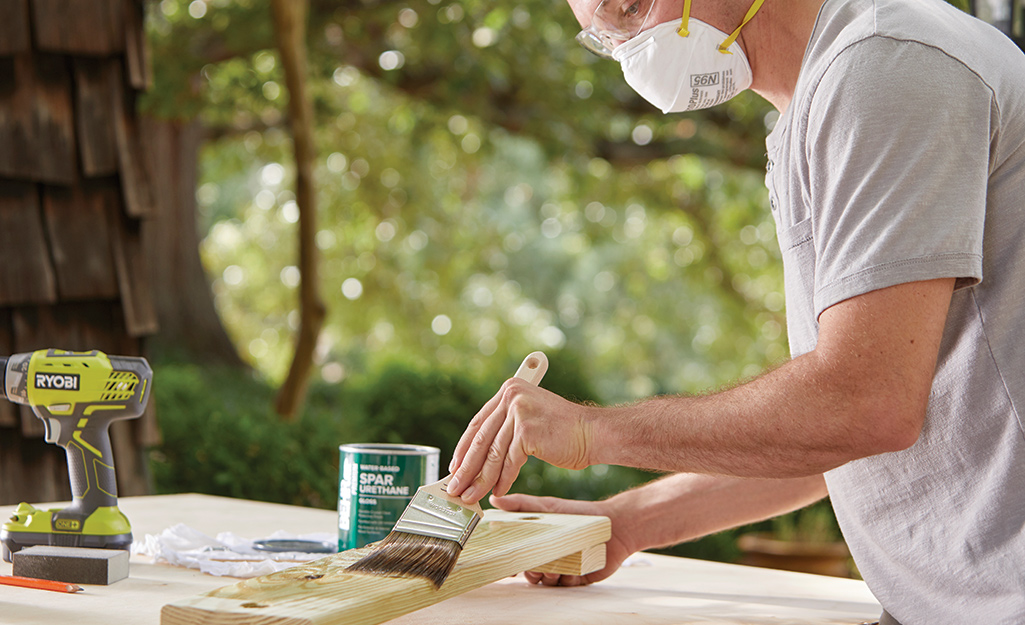
When you finish building the seat of the tree swing, stain it to protect it from the elements.
- Use an exterior stain. Applying the stain with a brush works well.
- Cover the board with a coat of polyurethane. Allow it to dry and then add another coat.
- Follow the directions on the can of stain for drying times.
- Give the tree swing time to dry completely before adding the rope.
Tie the Knots
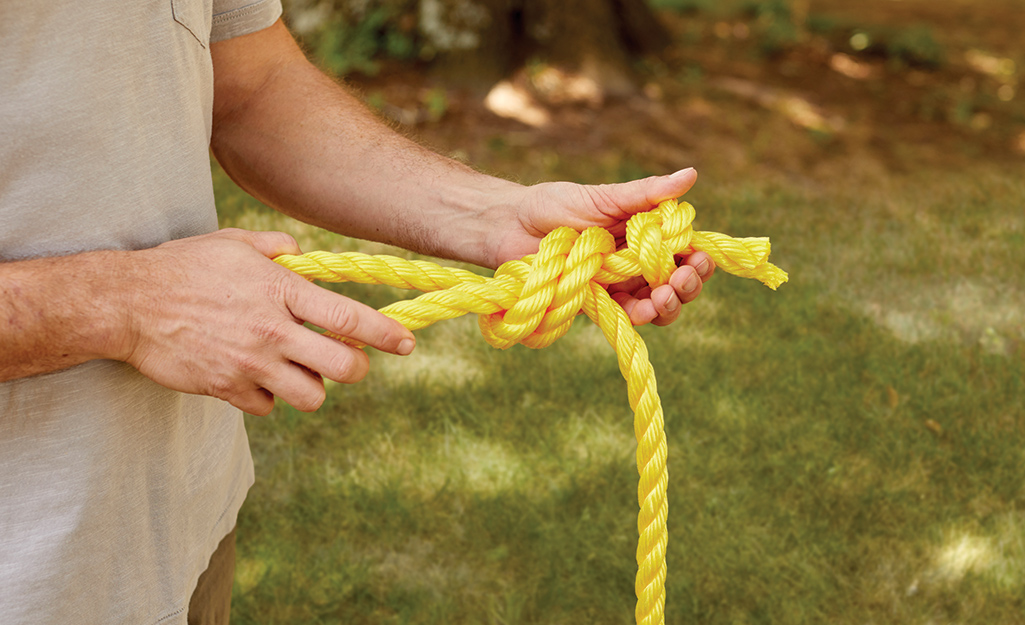
A couple of simple knots will work for a tree swing.
- First, tie an overhand knot at the very end of the rope and pull it tight. This will be the stop knot.
- Form a 12-inch loop by doubling over the rope.
- Tie that loop in an overhand knot, making a stable 6-inch loop in the end of the line.
Secure the Rope Around the Limb
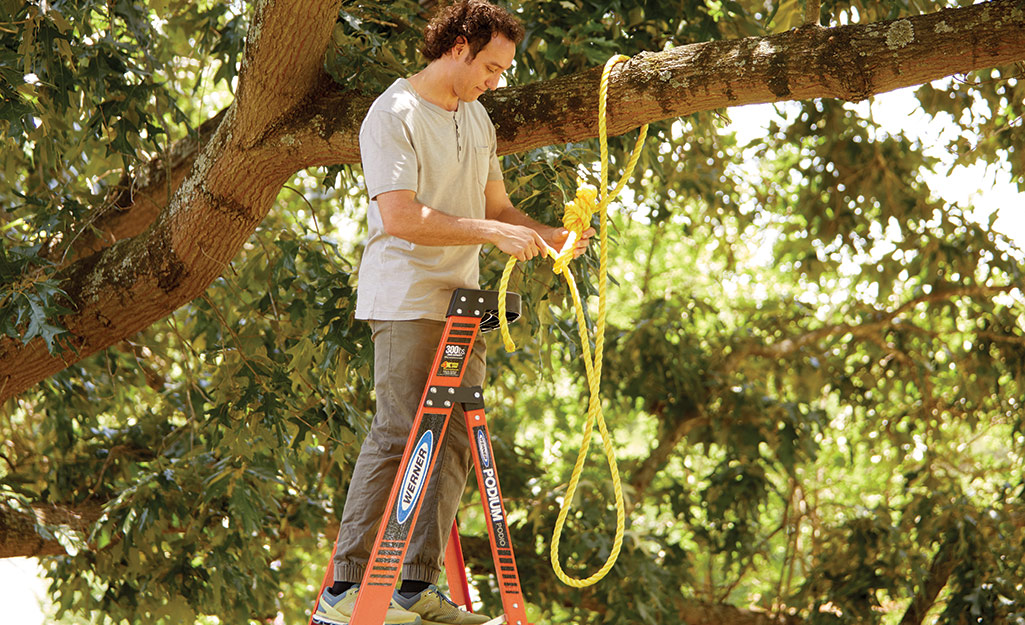
If you have a ladder suitable for the job, you can use it to hang the tree swing. Follow the manufacturer’s guidelines when using a ladder to access a tree.
- Climb up the ladder with the knotted rope. Put the loop over the limb.
- Pull the rope through it, with the line end running out of the loop on the bottom of the limb.
- Repeat this process with the other rope, with a 24-inch gap between them.
If you don’t have a ladder that can be used to access a tree, fasten a lighter piece of rope to a small weight of some kind, like a stick or an arborist’s throw bag.
- Throw the bag over the limb, then tie the line to the end of the rope that doesn’t have the loop.
- Pull the line and rope through the loop and keep pulling until the loop is secure against the limb.
- Repeat the process for the other rope, about 24 inches from the first one. It may take several tries to get it all in the right place.
Attach the Seat
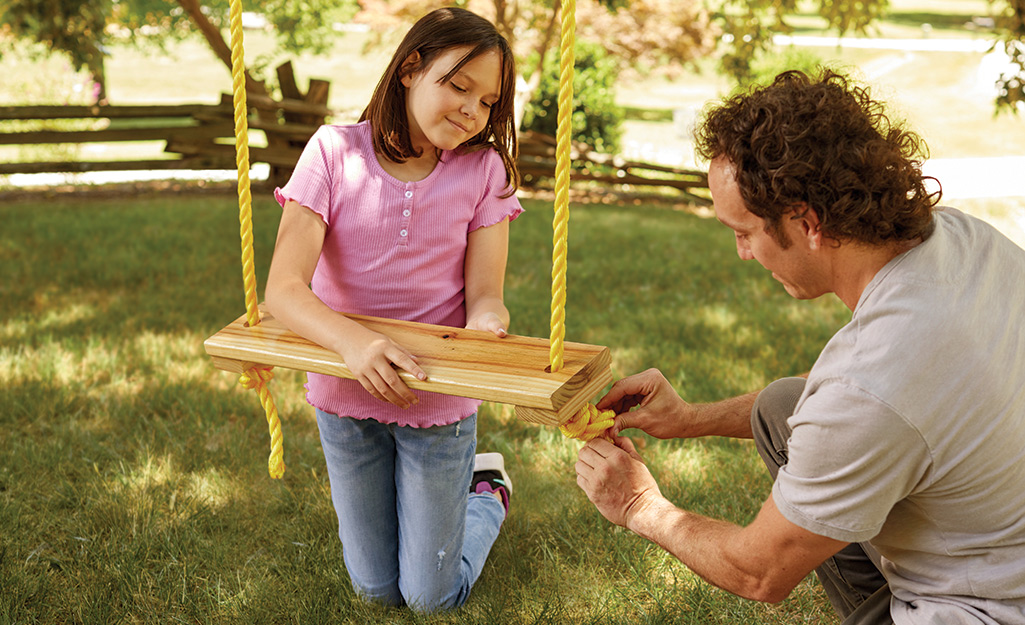
Once the rope is on the tree branch, you can attach the seat of the swing. Be sure the stain has dried completely.
- Thread the end of one of the ropes through one of the holes in the seat.
- Adjust the seat height until the swing is where you want it.
- Pinch the rope with one hand or a spring clamp at the bottom of the seat.
- Tie an overhand knot at this point.
- Tie a second overhand stop knot against the first knot.
- Repeat the process on the other side.
Adjust and Test

- Use a tape measure and level to ensure the board hangs the same distance from the ground at each end and that is it level. Cut off any excess rope as needed. Leave a couple of inches on each end in case you need to adjust the tree swing later.
- Let an adult sit in the swing to test it. An adult’s weight will “set” the knots to make them hold and keep the swing safe and stable. Expect the swing to hang a couple of inches closer to the ground with an adult sitting in it.
- Supervise kids or anyone else who may need help while on the swing. Tell children using the swing to keep both hands on the rope at all times.
Tree Swing Maintenance
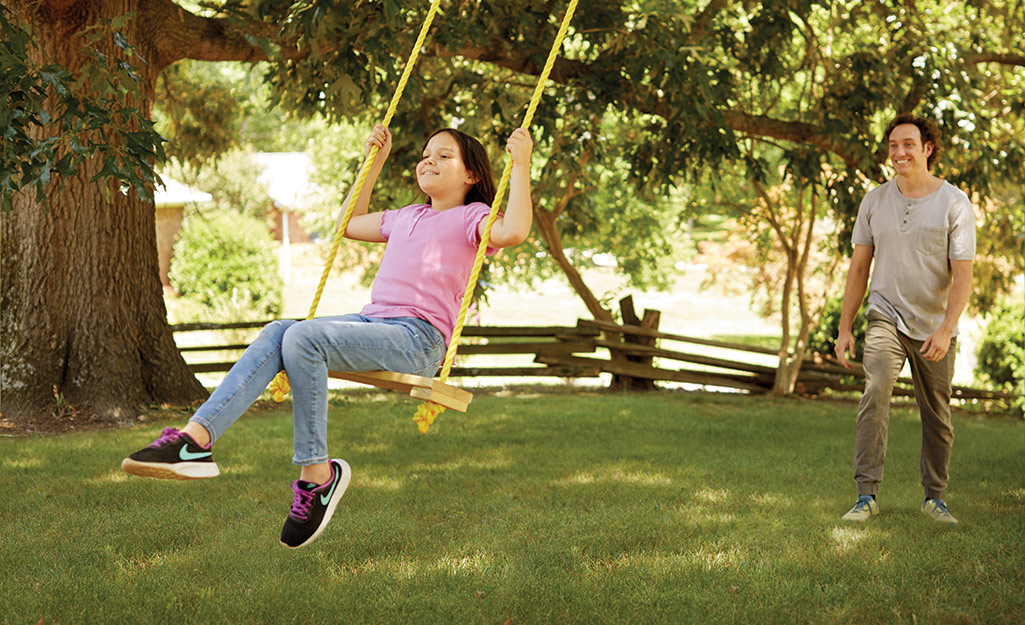
- Check the rope and seat on a regular basis for breaks or signs of wear or weakness.
- Discontinue use of the swing if any cracking noises are heard coming from the tree.
- Rope will often stretch after some use, especially if it’s wet when used. Adjust the height of the tree swing as needed.
- If the rope starts to rub grooves into the tree branch or cause any other kind of damage to the tree, move the tree swing somewhere else.
- Check the tree and limb often for signs of rot, decay or disease.
- Check the tree for dead or broken limbs above the swing. These limbs must be removed immediately, before the swing is used again. This is particularly important after storms with high winds or freezing precipitation.
When you know how to make a tree swing, you can create a spot in your yard that’s fun and relaxing. A wood seat made of pine or oak and synthetic rope will work well for building the swing. As you decide on a place to hang the swing, pay careful attention to choosing a healthy tree. If you're not interested in a DIY project, you can also opt to hang a ready-made tree swing.
Ready to find the supplies to make a tree swing? Use
The Home Depot app
to locate products and check inventory at your local store. We'll take you to the exact aisle and bay.



























